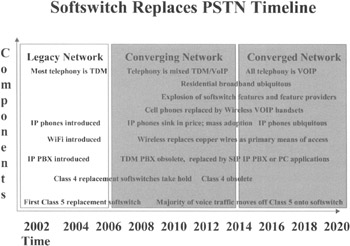The Role of 802.11b in Better Living Through Telecommunications
|
|
At about 1920, half the American population either lived on farms or in farming communities. Today that figure is less than 5 percent. What happened over the last 80 years? Obviously, the farming half of the population moved to the cities in search of better pay. Cities have always been communication hubs (railroad, highways, telephones, and the Internet). Also, it has historically been perceived that cities contain more vibrant communities (theater, opera, live music, and cinema) than what could be found in the country.
The telecommunications revolution can make both of those perceptions obsolete. Historically, rural areas are the last to get the newest telecommunications technologies, as they pose a lower rate of return for the service provider. Much of rural America's telephone and electric infrastructure was built by cooperatives of farmers pooling their labor and money to install telephone and electric poles and wires. This scarcity of telecommunications infrastructure extends to the suburbs of the largest cities in the United States. As of 2002, only an estimated 8 percent of U.S. households had access to broadband services. This is due largely to a lack of infrastructure for broadband and perhaps a reluctance on the part of incumbent service providers to make the investment on DSL infrastructure when they could be retaining the cash to make their stock more attractive or pay down mountains of debt.
802.11b and associated wireless protocols, by virtue of being simpler, smaller, cheaper, and more convenient for competitive service providers to deploy, enable more service providers (ISPs, application service provider [ASPs], power companies, municipalities, cable TV companies, and wireless service providers) to reach more customers. Most importantly, this would allow data service providers to offer voice and video services. Voice services offer higher margins than data services. The prospect of generating revenue from both data and voice should motivate service providers to enter as many markets as possible. This trend could be enhanced where service providers can bypass the facilities of incumbent service providers. Even if alternative service providers don't specifically charge for voice, bundling it with data could prove attractive. The same is true of offering wireless video over IP as a means of bypassing cable TV company monopolies.
Wireless broadband is a technology that can ignite competition for telecommunications services. What little competition the Telecom Act of 1996 inspired in the telecommunications field was for business services in business districts throughout the United States in the late 1990s. Competitive service providers sought to "cherry pick," that is, offer service only to business subscribers, in high-density areas, thus maximizing return on investment (ROD in the infrastructure in city centers. This ultimately led to hypercompetition, a "race to the bottom" in pricing, and ultimately the shakeout and bankruptcy of many service providers.
This hypercompetition should have the effect of driving service providers to find less competitive markets (suburbs and rural areas) where they would enjoy less volatility. In some metropolitan markets, the price of a data T1 has dropped to $300 from precompetition levels of $1,200 per month. The deployment of 802.11 with 11 Mbps at a $100 per month subscription rate would torpedo PSTN data pricing and possibly much of the PSTN market share in both voice and data services (see Figure 10-1).

Figure 10-1: The transition from a PSTN to an Internet infrastructure
|
|
EAN: 2147483647
Pages: 96